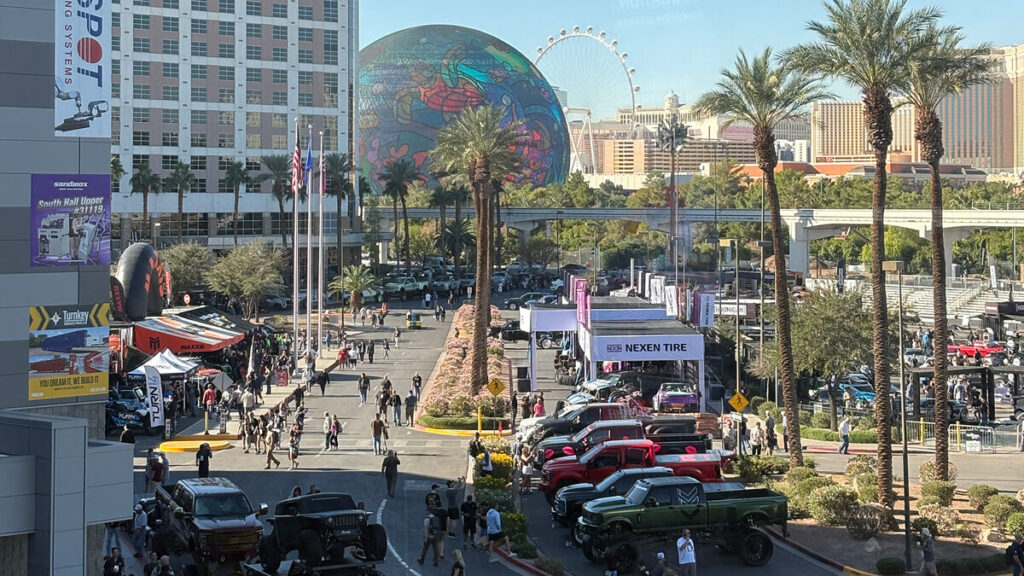
SEMA 2025 has turned Las Vegas into an automotive playground again, a place where every hall hums with new powertrains, paint, and ideas. Across 1.2 million square feet of creativity, 2,300 exhibitors, and tens of thousands of builders and fans, the show captured everything the aftermarket stands for: heritage, experimentation, and a bit of chaos. The energy felt like a reset button for the culture, less sterile tech conference, more celebration of imagination.
The New Era of Power and Performance
The ribbon-cutting ceremony had the symbolic weight SEMA always tries to deliver. Industry heavyweights, FIA leadership, and local officials all underscored the same theme: the aftermarket remains the pulse of global automotive innovation. The kickoff breakfast reinforced it, with Jay Leno coaxing out a grin from Stellantis’ Tim Kuniskis as he promised “performance is absolutely back.” The comment echoed through the halls all week, not as marketing bravado, but as a statement of intent.
The industry may be navigating electrification, automation, and AI-driven repair, but the mood in Las Vegas was anything but cautious. From propulsion diversity to ADAS calibration workshops, it was clear that this community thrives on adaptation rather than fear of change.
OEM and Builder Highlights: Reinvention Everywhere
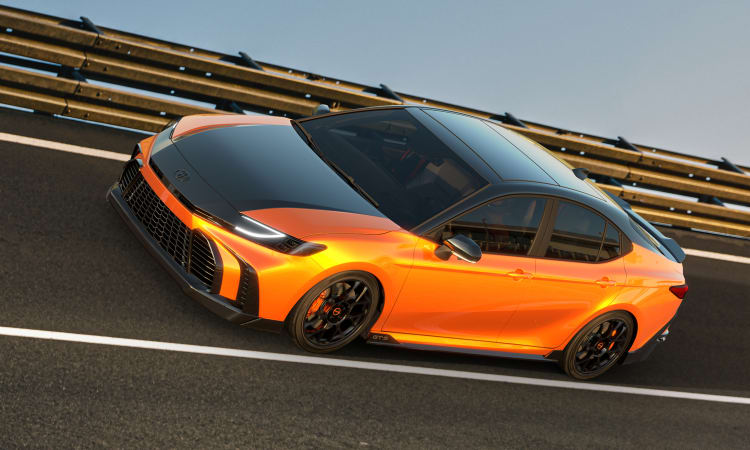
Toyota came armed with seven builds showing its full powertrain spectrum, proof that internal combustion, hybrid, and electric performance can coexist. The Turbo Trail Cruiser Concept, a 1985 F60 Land Cruiser powered by a twin-turbo V6, set the tone: classic sheet metal, modern muscle, zero compromise. The 2026 Corolla Cross NASU Edition turned a city commuter into a mountain-ready overlander, while the Camry GT-S showed how the company could channel its endurance-racing DNA into a family hybrid. It was Toyota’s quiet reminder that the car for every driver still matters.
Ford, meanwhile, reminded everyone that subtlety isn’t in its vocabulary. The Maverick 300T revived the spirit of the ’90s street truck era with 300 horsepower, big wheels, and honest performance tuning. Above it all towered the 900-hp Raptor R, an apex predator that made even the TRX seem polite. Both builds were fully emissions-legal and signaled a new kind of power war, not just who can go fastest, but who can make it feel effortless.

Velocity Restorations’ Fox Body Mustang and Bisimoto’s Odyssey Type R became the unofficial show mascots. Velocity’s Mustang redefined restomod precision with its SPEC chassis and supercharged Coyote heart, the long-overdue redemption arc for the Fox platform. The Odyssey, meanwhile, embodied pure audacity: 550 horsepower, a manual gearbox, and the confidence to turn suburbia into a pit lane. Together they summed up SEMA 2025’s attitude, equal parts engineering and mischief.
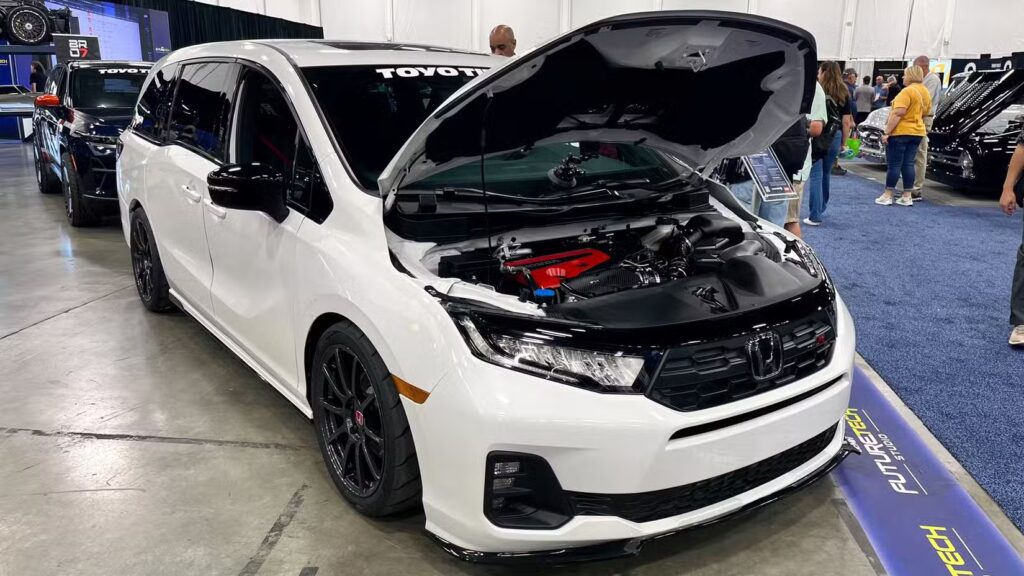
Tools, Tech, and Trade Buzz
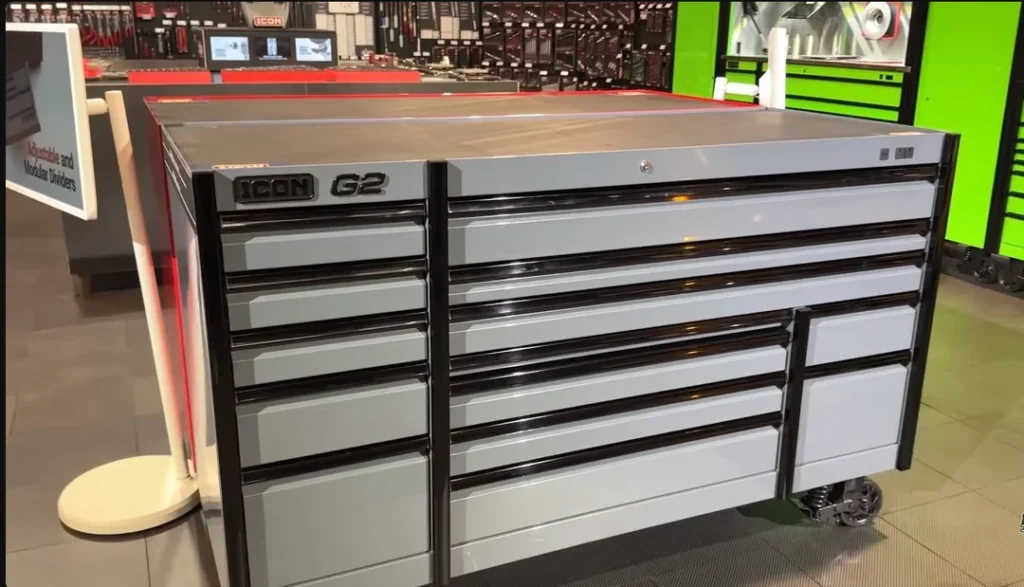
One of the most animated corners of SEMA wasn’t a car display at all, it was the crowd packed around the Harbor Freight and ICON booths. The excitement was tangible, and for once, it wasn’t about bargain hunting; it was about legitimacy. The new 30-inch-deep ICON toolboxes drew constant debate over design details, handle colors, and depth specs. Builders appreciated the improved ergonomics and storage, seeing them as a serious challenge to the premium tool-truck brands. The extra-deep layout and new trim options felt like a statement that customization shouldn’t cost twenty grand.
Discussions around build quality, colorways, and brand loyalty spilled into every aisle. Many professionals see Harbor Freight’s evolution as a cultural shift, from budget standby to a brand setting trends in its own right. The new Hercules cordless and corded dual-action polishers further fueled that perception. The 20 V 5″ cordless DA, corded 5″ model, and compact 3″ polisher represented a lineup that felt complete for the first time. Builders liked the practicality, long cords, compact weight, and accessible pricing, and treated it as a genuine professional option rather than a weekend toy.
There was also a sense of momentum behind the scenes: new ratchets, brushless grinders, and color variants all hint that the next twelve months could see Harbor Freight and ICON step firmly into pro-grade territory. For a brand once defined by compromise, the conversation has clearly flipped, now it’s about potential.
Innovation Across Every Segment
SEMA’s official New Product Awards echoed that same spirit. Revv ADAS secured a second consecutive win for its Integration Ecosystem, Dynam Labs’ VCU+ claimed the top spot in Emerging Technology, and Method Race Wheels’ new bead-grip design showed how even heritage categories can innovate. The awards hall captured SEMA’s evolution perfectly: performance, safety, and software now share equal space on the innovation ladder.
In the refinishing and collision zone, technology met tactile skill. Refinishers praised Fuji Spray’s Valor Mini H50 and Sagola’s redesigned Hex-tip guns for bringing precision back to craftwork, while shops debated AI-assisted calibration tools that promise safer, more efficient repairs. The mix of excitement and skepticism felt healthy, progress grounded in the reality of shop floors and spray booths.
Scenes from the Floor: Energy, Style, and Nostalgia

Walking the floor on Day One felt like stepping into a living time capsule of creativity. The Gearwrench overland 4Runner anchored one end of the hall, while Opti-Coat’s mirror-finish displays and Haas Automation’s CNC demos drew the engineering crowd. Everywhere you turned, color and craft were back in fashion. The comeback of hand-painted graphics, striping, and metallic gradients defined the visual language of the show, a collective return to artistry over algorithm. Paintwork on everything from lifted Tahoes to lowrider panels carried that unmistakable “old-skool” swagger, blending retro aesthetics with modern materials.
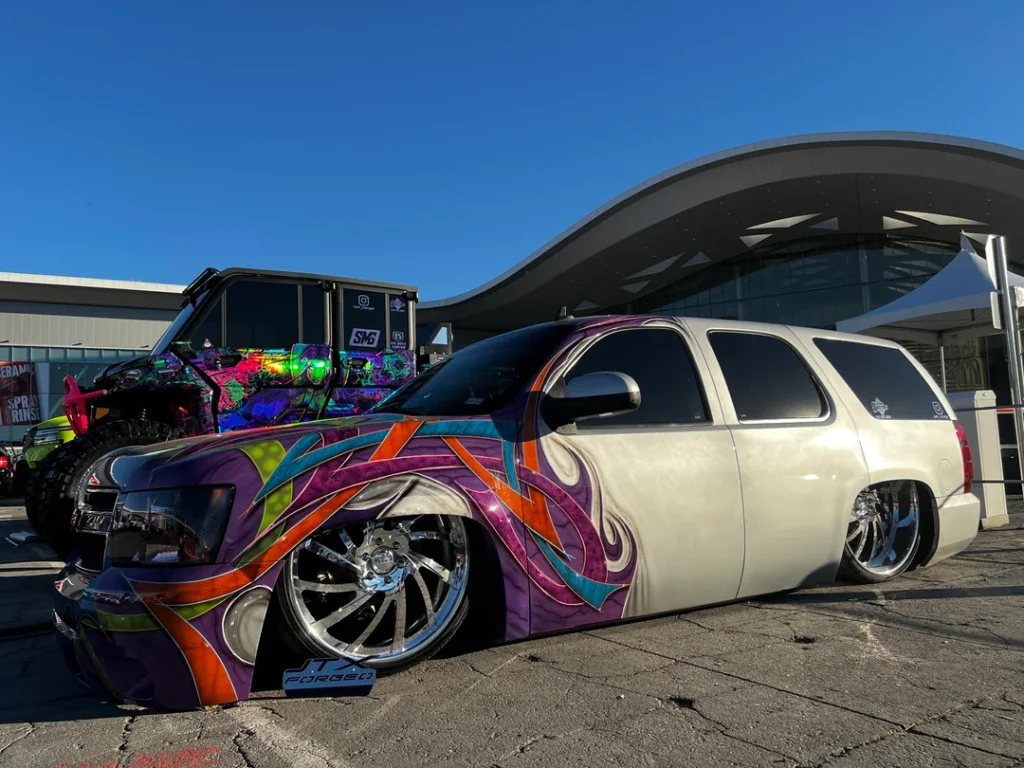
The NHRA on FOX stage added its own soundtrack to the chaos. Between live interviews with Jack Beckman, Brittany Force, and Austin Prock, the conversations blurred the line between racing culture and aftermarket engineering. The buzz wasn’t just about horsepower — it was about community.
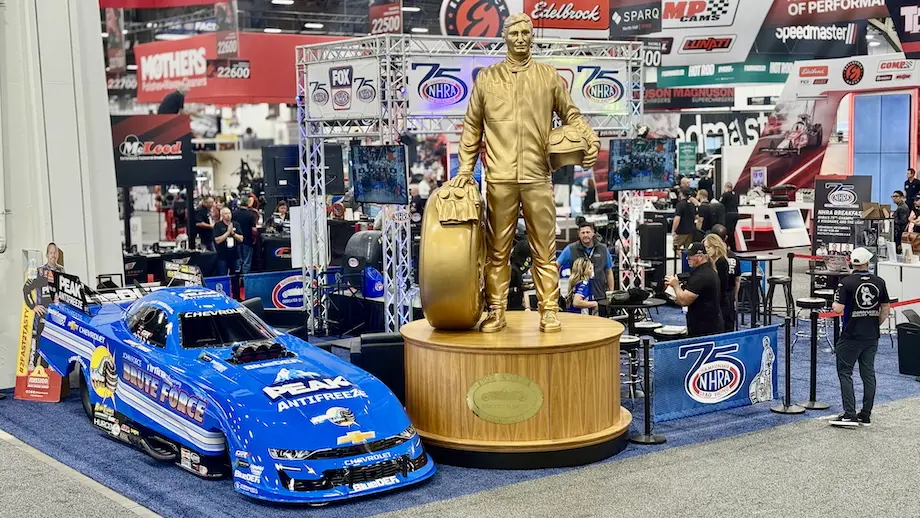
OEMs, Partnerships, and Brand Culture
While the big builds captured headlines, brand activations kept the crowd grounded. Hankook Tire’s partnership with Donut Media turned its booth into a hybrid between a fan zone and a content studio. The mix of podcast tapings, Q&As, and Dynapro-equipped off-road rigs gave the space a constant hum of interaction. It was a glimpse of how modern brands now measure engagement: not by the size of a display, but by the energy it sustains.
This cross-pollination of culture and commerce carried into SEMA Fest as well, where live music and motorsports demos blurred together under the desert lights. It cemented SEMA’s position not just as a trade show but as a lifestyle moment, where the next generation discovers both the tools and the thrill.
The Pulse of 2025
Every corner of this year’s show felt charged with possibility. The builders, toolmakers, and fans all seemed aligned on one thing: innovation is fun again. The Fox Body revival, the Odyssey sleeper, Toyota’s powertrain experiments, and Harbor Freight’s design renaissance each captured different sides of the same movement, progress with personality.
SEMA 2025 proved that technology and tradition don’t have to compete. They can share a booth, swap ideas, and make each other better. From bead rollers to brushless ratchets, from 900-hp trucks to purple toolboxes, the conversation in Las Vegas was loud, opinionated, and alive, exactly the way this industry should be.
